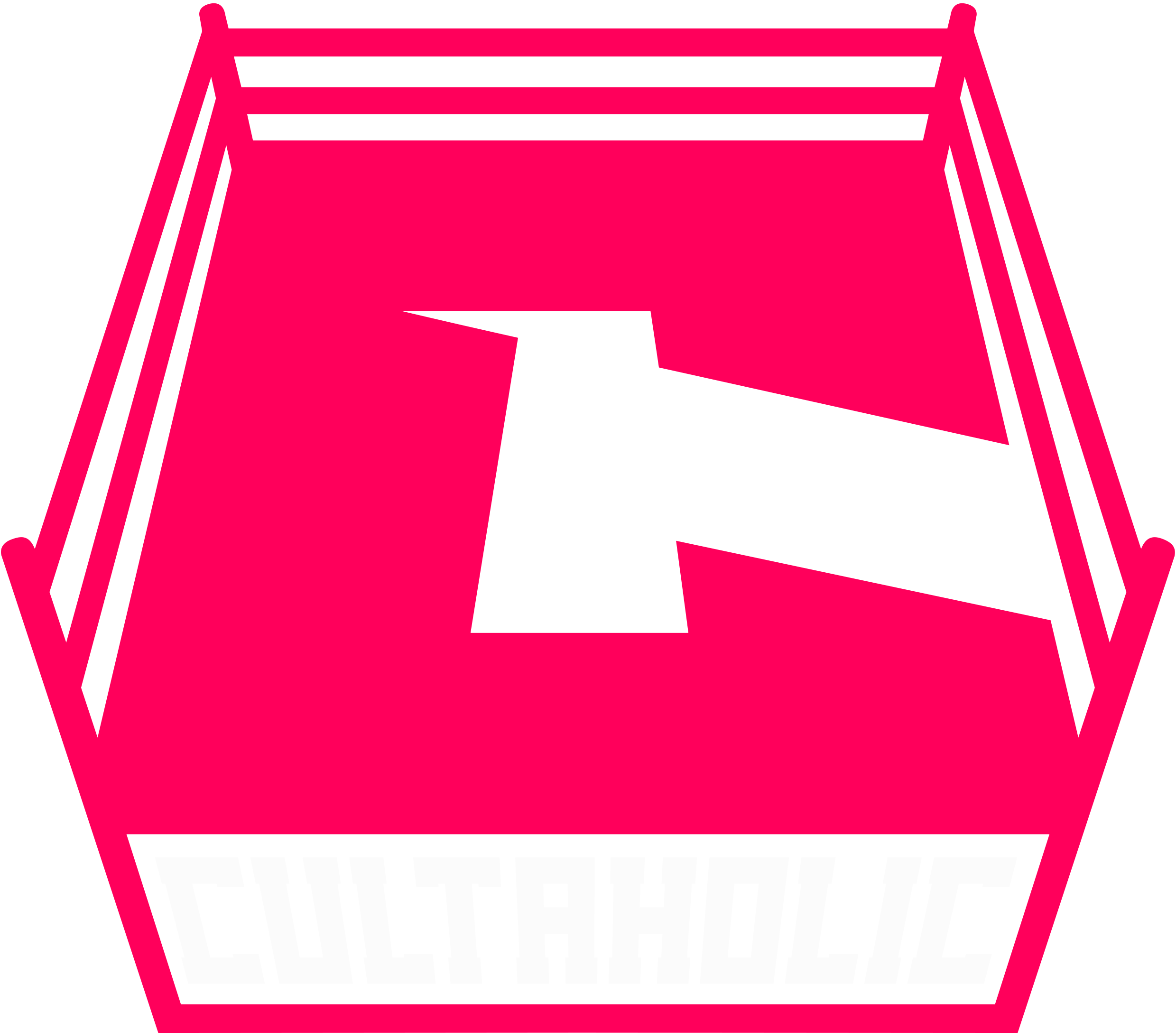The Incredible True Story Of Hulk Hogan's Historic Heel Turn At WCW Bash At The Beach 1996
Everything you need to know about Hulk Hogan's WCW Bash at the Beach heel turn
On July 7, 1996, in the main event of WCW's Bash at the Beach pay-per-view, Hulk Hogan executed one of the most famous heel turns in the history of professional wrestling.
On the surface, it appeared that the erstwhile-heroic Hulkster was storming the ring in order to defend WCW's honour, standing up to self-professed Outsiders, Scott Hall and Kevin Nash. That's when Hogan, to the astonishment of the 8300 fans in Daytona Beach, and the many more watching at home, suddenly turned and dropped the big leg on a prone Randy Savage. This moment marked the official birth of the New World Order, the revolutionary faction that changed the wrestling business forever. Hogan's heel turn was the perfect shockwave to kick off not just the nWo lifespan, but an industry-wide shift in marketing, booking, and overall fan perception - and yet, the turn came dangerously close to not happening at all.
This is the true story of Hulk Hogan’s WCW Bash at the Beach 1996 heel turn and the formation of the nWo.
A full 41 nights before that fateful leg drop, the most talked about wrestling storyline in years commenced during a throwaway match on Monday Nitro. Scott Hall (just eight days removed from his WWE "curtain call") jumped the guardrail during a filler bout between The Mauler and Steve Doll. The match kind of just ended as the unnamed Hall, now armed with a microphone, began running down WCW in such a manner that, to the good many fans lacking access to rumours in 1996, it seemed like a fed-up Razor Ramon was gatecrashing on behalf of WWE. The perplexed commentary lent credence to the notion that Hall's intrusion wasn’t part of the show.
Bolstering that idea was Kevin Nash, who arrived on Nitro two weeks after Hall's initial appearance. Speaking in line-blurring vagaries regarding his exact loyalties, the man all-too-recently known as Diesel joined Hall in vowing to raise hell upon the entire WCW infrastructure.

The night of Nash's WCW return marked the final time for close to two years that WWE Raw would beat Nitro in the Nielsen ratings. The intrigue in Hall and Nash's trespassing adventures became the talk of the industry.
After all, as the story was told, Hall and Nash demanded to face any three WCW wrestlers who had the guts to fight on the promotion's behalf. This meant that Hall and Nash apparently had a third man of their own - because where there's smoke, there's bound to be fire. That opened the door to all kinds of wild speculation as to what mysterious mercenary with New York ties could be joining Hall and Nash in their hostile takeover.
That speculation initially centred upon the free agent pool. In the July 1, 1996 edition of the Wrestling Observer Newsletter, it was noted that some of the discussed candidates included recent WWE castoffs like Crush and Mabel. However, it needs to be said that at no point did Dave Meltzer ever declare with certainty in his writings that Mabel was going to be "the third man”, though that hasn't stopped certain people from continuing to propagate that myth.
Another interesting name was Davey Boy Smith, a recent world title challenger who had actually given his notice to WWE shortly before the May edition of In Your House. At the time, Smith had no real intention of leaving, and was simply looking for a more favourable contract with McMahon. Though WCW did make him a generous offer in this period, WWE eventually re-upped The British Bulldog on a five-year deal.
The most tantalising candidate was Bret "The Hitman" Hart, whose WWE deal had expired in between his WrestleMania 12 world title loss and The Outsiders showing up in WCW. Alas, while WCW did send out feelers, Hart was set upon returning to WWE at some point, so he wasn't going to be that "third man".

While speculation grew more intense, Gene Okerlund announced on the June 17, 1996 episode of Monday Nitro that a random drawing had been held, to determine who would represent WCW against Hall, Nash, and the unnamed partner. The names pulled in the off-camera drawing were Randy Savage, Sting, and Lex Luger, coming ahead of Ric Flair, WCW World Heavyweight Champion The Giant, and Hulk Hogan. The same Hulk Hogan who hadn’t been seen on WCW programming in months. After the April 15 episode of Nitro, the well-accommodated Hogan was written out of WCW stories, as he took a break to shoot a movie and spend some time at home.
When that sabbatical began, Hulk's WCW tenure was at a serious crossroads. In the two years since coming aboard WCW, Hogan's run was a bit uneven, to say the least. The 1994 Bash at the Beach (in which Hulk won the WCW World Heavyweight Championship from Flair in his debut match) was the most-bought PPV in WCW's history to that point, accounting for 225,000 buys. A Halloween Havoc rematch between Hogan and Flair for the belt, with their careers also on the line, drew 210,000 buys, good enough for the second-most ever at the time.
However, nothing in 1995 (the first 10 months of which Hogan reigned as champion) came close to equaling those loftier numbers. There were clear diminishing returns for the largely unchanged red-and-yellow presentation, as while Hogan remained the biggest household name in all of American wrestling, the act was beyond the threshold of staleness.
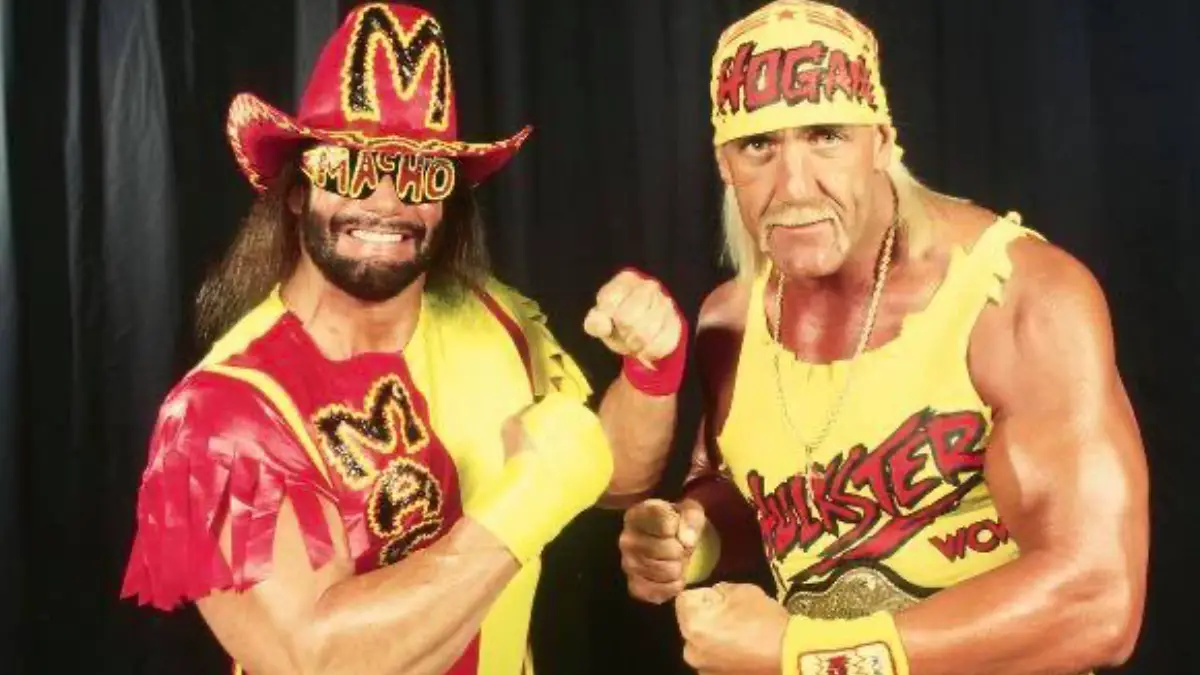
While Hogan did lure a fair number of loyal WWE fans to WCW, a sizeable chunk of the core WCW audience (particularly those in the Flair-centric Carolinas) despised Hulk. His broad and cartoony New York style didn't mix well with the workmanlike "rasslin" that Flair and his ilk were meant to be the avatar of. That, and Hulkamania was pretty well played out after 12 years of running mostly wild.
The Hoganisation of WCW yielded mixed results. While the mainstream-adjacent Hulk did greatly improve WCW's overall public profile, it came at the expense of major cosmetic changes to the product. Whether it was the importation of many of Hogan's friends, or his sheer dominance over Flair and company, or other self-indulgent set pieces, Hogan's flag flew high and heavy over what was once the best alternative to Hulkamania.
By 1996, WCW crowds seemed to be rejecting Hogan more than ever. While that year's Uncensored ended up doing extraordinary pay-per-view numbers, the main event went down in infamy as the one in which Hogan and Randy Savage defeated eight opponents in the most confusing, non-sensical, and downright bad steel cage match that had ever been concocted.
A week later, Hogan was booed out of the arena at Monday Nitro in Cleveland. It was the latest in a long run of instances where WCW's ticket-buying public expressed their distaste for the unquestioned star of the show.
Some time well before Scott Hall and Kevin Nash stormed the gates of World Championship Wrestling, Eric Bischoff sat down with Hogan in his home to propose something unthinkable: a heel turn for pro wrestling's resident Superman.

It wasn't going to be an easy sell. Between his legacy as a veritable superhero, his work with children's charities, and the way "going bad" could harm his bottom line, Hogan was understandably apprehensive about making the switch. For much the same reason John Cena remained a babyface (even as fan sentiment grew more corrosive), Hulk had serious reservations about a heel turn.
As the story goes, Hogan responded to Bischoff by saying: "Brother, until you have walked a mile in my red and yellow boots, you'll never really understand."
It looked for all the world like a Hogan heel turn, no matter how dangerous and intriguing, just wasn't going to take place.
Then The Outsiders happened.
While it's certainly easy to look cooler by comparison to an aimless parade of bad pastel-coloured gimmicks on the other channel, Hall and Nash greatly transcended the median norm for pro wrestling. Their unscripted banter and their too-cool-for-the-room attitudes, as well as that lingering threat that something monumental was about to happen, was much more interesting than anything on Raw - and anything else on Nitro, for that matter.
As noted, with the Hall and Nash intrigue came greater TV ratings. On June 17, for just the second time since the start of the Monday Night Wars, Nitro beat Raw by more than a full ratings point. That episode was the fallout of the previous night's Great American Bash, where Hall and Nash brutally attacked Bischoff for refusing to divulge the names of their Bash at the Beach opponents.
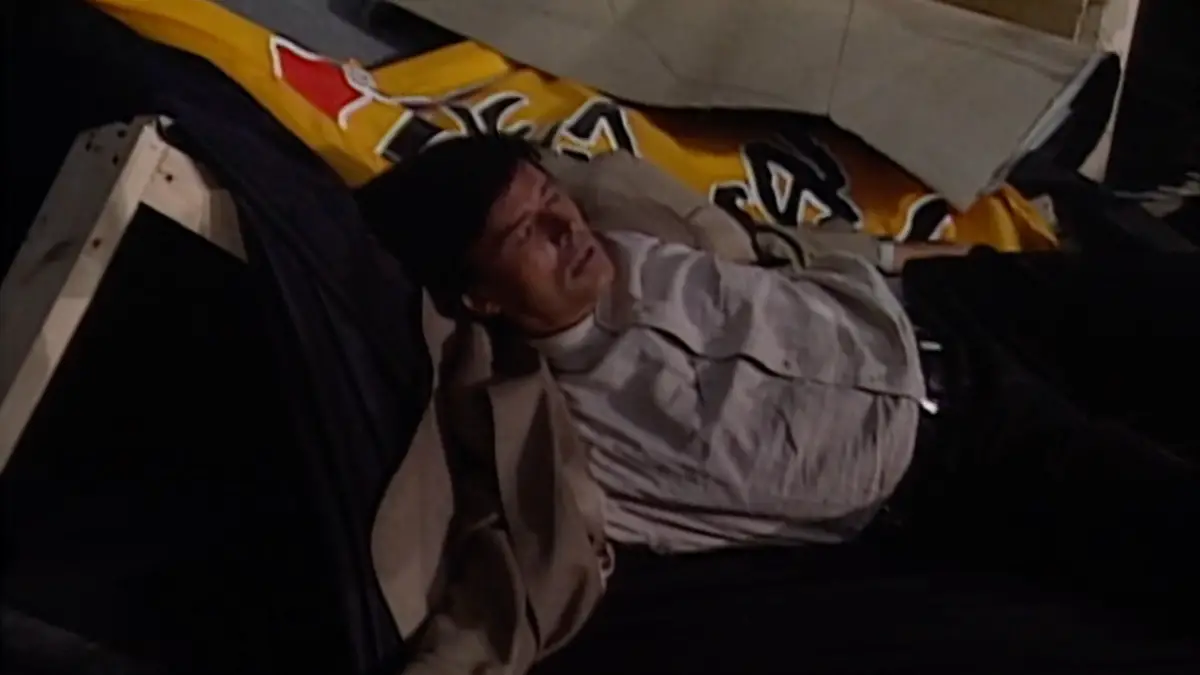
Hogan was absent while all of this was going on, and it's not like he was dearly missed. When Hulk went away in April, his exit preceded the start of the NBA playoffs on TNT, which facilitated time slot changes for Nitro. In those weeks, Nitro got slaughtered in the ratings by Raw, which aired in its usual slot.
Since he wasn't on those doomed time slot programmes, the ever-wise Hogan couldn't be blamed for their wilting in the ratings. He also wasn't likely to reappear until the ratings were certain to rebound. With his contract coming due later in 1996, Hogan wanted every advantage possible in negotiating an even better deal for himself, and being the "ratings saviour" during wartime would be quite the bargaining chip.
The problem was, with The Outsiders monopolising the headlines (not to mention Nitro's move to two hours at the end of May giving them one unopposed hour), Nitro experienced a major surge in TV viewership. Prior to June 17, Nitro had only done a 3.3 or higher rating on three occasions. Beginning June 17, they would equal or exceed that mark in five consecutive weeks.
Hogan's value was in being the driving force behind maximising the TV and pay-per-view audiences and now, two genuine "Outsiders" were driving WCW to their strongest TV ratings to date. In other words, the ageing, inflexible Hulk was becoming more and more expendable, and it was time for a change.
In the weeks before Bash at the Beach, Bischoff hadn't fully settled on who the third man was going to be. He just knew that the reveal needed to match, if not surpass, Hall and Nash's standing as stars. The more shocking that reveal, obviously, the better.
As June wound down, Bischoff flew to Los Angeles to meet up with Hogan, who was out there filming Santa With Muscles. At the end of the day's production, Hogan and Bischoff caught up on things. Clearly, Hulk had been keeping tabs on WCW's stories, because he pointedly asked Bischoff who the third man was.
When Bischoff couldn't give a definitive answer, Hogan responded: "I know who he should be. You're looking at him."
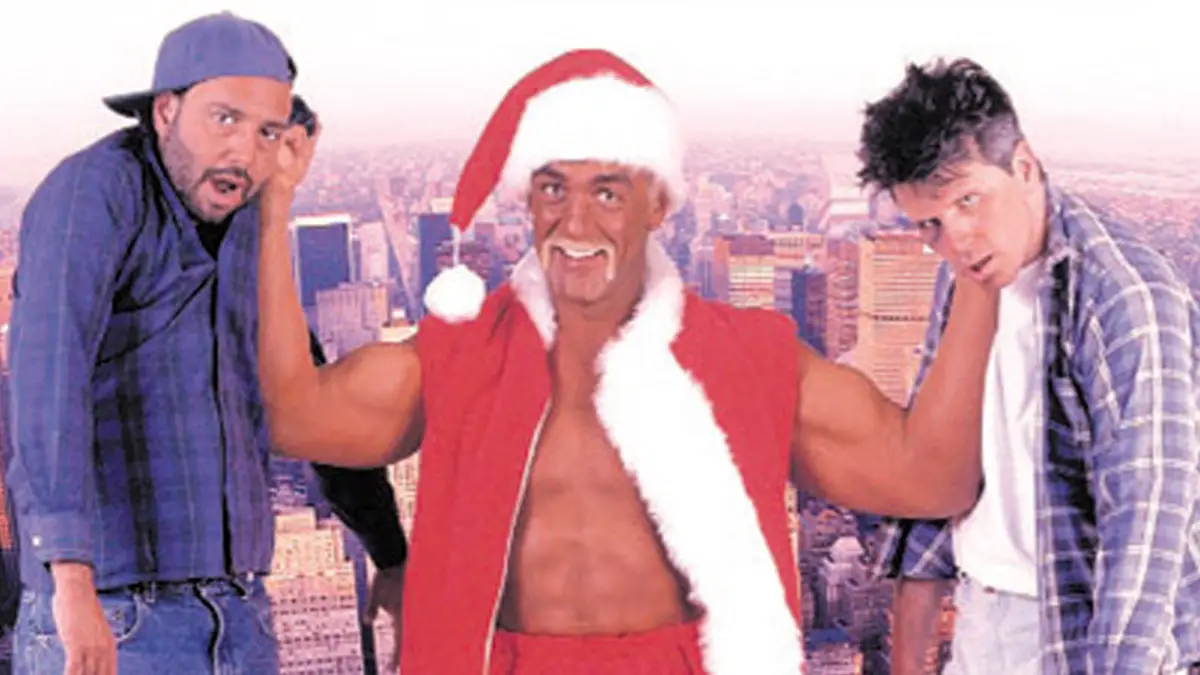
This suggestion stood in stark contrast to Hogan's prior unwillingness to turn heel. But Terry Bollea, savvy businessman that he is, knew an opportunity when he saw one.
As Nash later stated: "Hogan had the business acumen to watch that money train leave and think, 'It's not moving that fast; I can still jump on it.'"
Sly manoeuvring aside, revealing Hogan as the third man would be the ultimate guttural shock. Barring Bret changing his mind and jumping ship, nothing was going to resonate quite like a Hogan turn, after all these years.
He may have been with WCW for the previous two years, but really, what wrestler was more "New York" than The Hulkster? In a year of shocking TV moments like The Outsiders' jump, Madusa's belt-trashing, and Lex Luger's casual stroll-out, it seemed that the most ground-shaking jostle would not be a promotional defection, but an internal one.
Hogan was now committed to the heel turn. Until, he wasn't.
Kevin Sullivan, the presiding "bookerman", was keenly aware that Hogan had a tendency to get cold feet when presented with major changes and concepts. Owed to a preference towards sticking with the safe route, and his listening to advice from others, Hogan could change his mind at any time.
Sullivan suggested that Hogan stay at his Daytona home the night before the pay-per-view, in an attempt to keep him mollified and calm about the impending change. When Hogan arrived at Sullivan's on that Saturday, however, he had his agent, Peter Young, with him.
Hogan laid out his point of view to Sullivan, that those in his camp were telling him the heel turn was the wrong avenue to take, that this move would be a career killer. Sullivan later claimed that he ended the discussions, and coaxed Hogan and Young to stay in separate guest rooms, as an effort to keep Young from further pulling Hulk away from the turn.
In the event that Hogan did walk away from the plan, Bischoff devised a back-up idea - Sting would instead turn heel, double-crossing his promotional home of nearly a decade. Though Sting had no ties to WWE at any point in his career, the hero of all the little Stingers going bad was the next best thing.
Apparently, when presented with the idea, Sting was a little skittish about turning heel himself but he was willing to do what he was asked, being the company man that he was.

Even as Bash at the Beach kicked off on Sunday evening in Daytona, Hogan had still not arrived at the building, nor had he re-affirmed his commitment to the angle. Nash even remembers Bischoff telling him as such early into the pay-per-view, so the Sting back-up plan was still very much in play. But Sting need not worry about the turn - Hogan arrived very late into the pay-per-view, somewhere between 30 minutes to an hour before the main event commenced.
Hulk was on board after all. When Hogan arrived, Bischoff privately whisked him away to discuss the final details. To this point, they (along with Hall, Nash, Sullivan, and Young the agent) were among a small handful of individuals who knew Hogan was even in the building, let alone the keystone to this all-important angle.
According to Guy Evans' Nitro, Bischoff and Hogan met in a utility closet to discuss the post-match promo that Hulk would cut, to explain to the millions of shocked fans why he just did what he did.
It was there that Bischoff instructed Hogan to utter the phrase "New World Order" in regards to the shocking collective. Though political figures have spoken of theoretical "new world orders" throughout the 20th century, it was wrestler-turned-announcer Larry Zbyszko that so happened to utter those three words on the go-home Nitro six nights prior, perhaps unwittingly inspiring Bischoff.
As for the match itself, Nash reportedly came up with its specific outline. He and Hall would enter first (to an instrumental knockoff of the Seal song 'Crazy'), but would refuse to spill the beans on the identity of the partner, just offering the vague assurance that we'd get the answer eventually.
Sting, Savage, and Luger entered second (all donning Sting-esque war paint) to begin what appeared to be a handicap match in favour of the heroes. However, the match quickly became two on two, when Luger was errantly taken out by Sting whilst Sting leapt onto a cornered Nash with the Stinger Splash. For that, Luger took a stretcher ride back through the curtain.
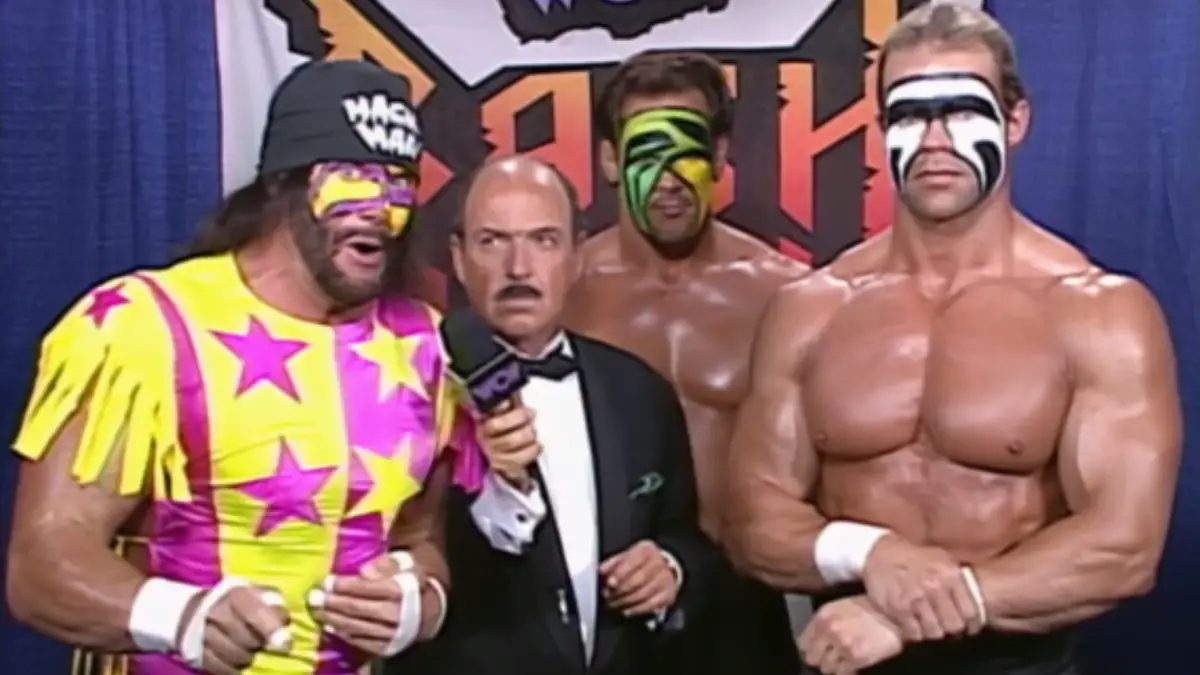
In taking Lex out of the bout, the viewer may have been led to believe that Luger (who jumped from WWE the prior September, and whose character tended to be treacherous) could just as easily return to the ring later to execute a swerve heel turn, but they'd just have to wait and see.
Savage and Sting fought back against their larger foes, but the Outsiders mostly held their own as tension continued to mount. The Macho Man got the late-match hot tag and began cleaning house, but was quickly felled by a Nash low blow.
With all four combatants mostly laid out, the crowd volume suddenly began rising. With no forewarning or even the blaring of his familiar theme music, Hogan strode out from the entranceway, bedecked in the familiar red and yellow.
Announcers Tony Schiavone and Dusty Rhodes cried out with excitement at the return of the heroic Hulk, while a frazzled Bobby Heenan questioned what side Hogan was on. Though some have claimed that Heenan may have ruined the surprise of a Hulk turn with his question, the announcers were left in the dark as to the Hogan surprise, and in kayfabe, Heenan never trusted Hogan in the first place. Nor should he have.
As The Outsiders bailed out to ringside, Hogan tore off his shirt, silently daring them to do something about it. That's when Hogan turned, and executed his famed leg drop across Savage's throat.
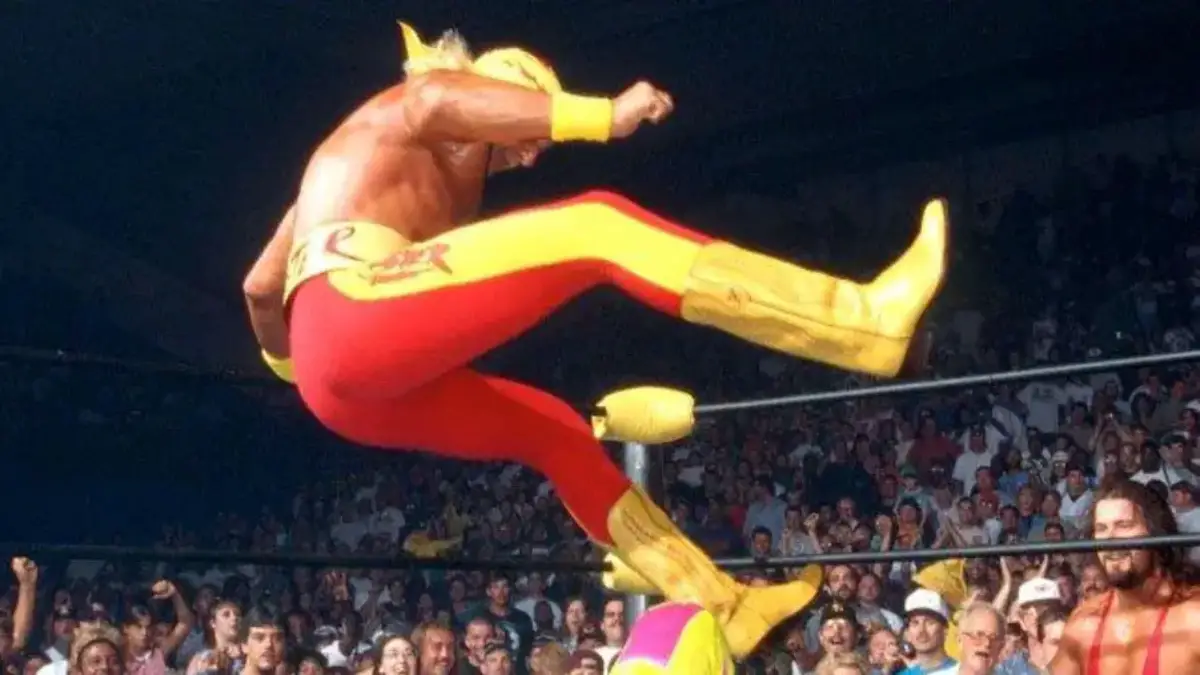
He dropped several more as the crowd went from exultant, to briefly silent, to verbalised stupor, all in a matter of seconds. The images, the sounds, and the words following those leg drops are forever etched in the foundation of pro wrestling. The torrents of garbage being thrown into the ring. The borderline-muted response of the commentators as they tried to reconcile what had happened.
And, of course, Hogan delivering what may well be the greatest promo of his famed career. He derided all of the people he'd made money and moments for, only for them (in his eyes) to push him aside as a dying fad. In essence, he vowed to the ungrateful promoters, wrestlers, and fans that he was done smiling for the cameras, and was now seizing total power, out of both greed and spite.
No official decision was ever rendered in that main event match, nor did there need to be. Who needs an ending, when you've got one hell of a beginning?
The beginning of the New World Order, and Hogan's unthinkable heel turn, are among pro wrestling's most unforgettable moments. The present and the future of the industry all changed drastically in the middle of the ring that night in Daytona Beach.
If not for a "right place, right time" decision, and the staving off of extreme second thoughts, the incoming metamorphosis would have been much, much different.
